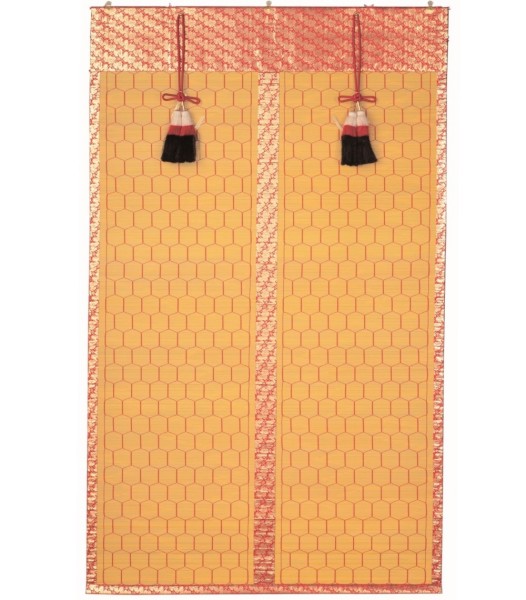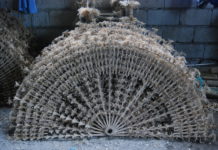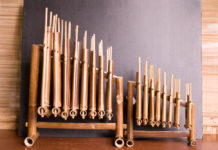The making of bamboo blinds precedes the Heian period (794-1185). Blinds of this kind were first used as a screen inside the Imperial Palace and the residences of noblemen. They became the model for blinds which are still used in traditional reception rooms today.
With supplies of good quality bamboo available at the foot of Mount Kongo, the making of bamboo blinds in Tondabayashi flourished and led to the establishment of a production centre in the area.
Unlike the now freely available bamboo blinds found at garden centres and interior stores in the West, Osaka Kongo Sudare are finely crafted. Whether used as a room dividing screen or as a shade from the sun, they create a particular Japanese atmosphere.
The blinds are made using long-jointed bamboos and the manufacturing process can be roughly divided into a bamboo-strip making stage, a braiding stage and a finishing stage.
In the Chugoku district including Tanba, Kyoto, Okayama, Shimane, bamboo is harvested in February. It is dried up until October when it is cut to the length of the bamboo blind. It is sometimes dyed yellow if it is for a Shinto temple and burnished. The bamboo strips are sewn together by machine with cotton and sometimes silk thread. The rims are then sewed and metal accessories are sometimes attached.
Further reference
This entry is referenced from the website of The Association for the Promotion of Traditional Craft Industries.





